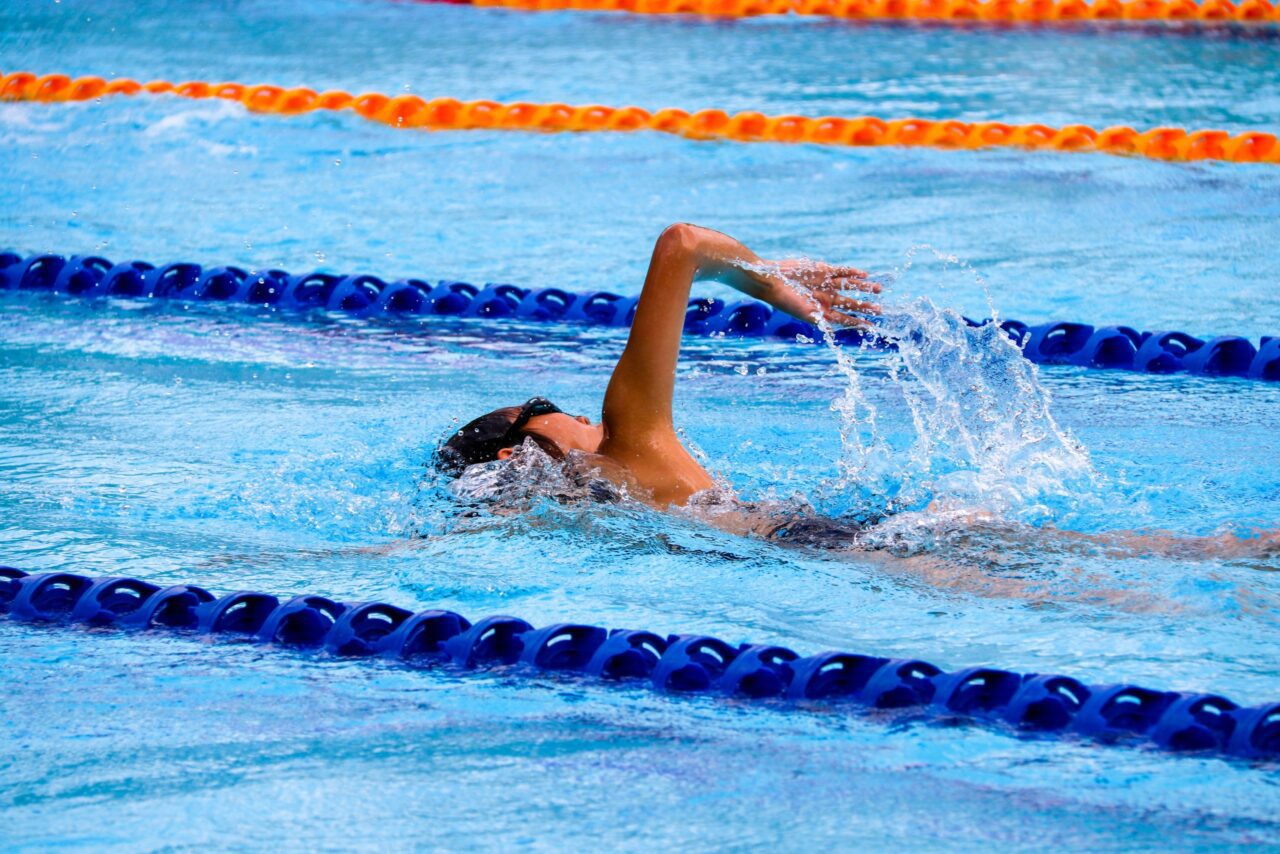Getting back in the pool

In the UK and much of Europe swimming pools are beginning to reopen again, some countries have already and others are due to in the very near future. As a result many triathletes, other than those regularly braving the open water over winter, are swimming again for the first time since December. Even if you’ve been swimming in open water for the past few months you’ll still require some adjustment period when returning to the pool.
Make a plan
Start with laying out your goals, whether that’s an open water race, triathlon or you just swim for general fitness and the date by which you wish to achieve this goal. If your goal is in the very near future then you should probably adjust your expectations, if you’ve not swam for a long period of time the chances are you won’t be smashing personal bests immediately upon your return. The other thing you should not do is panic train by starting as if you are Katie Ledecky. Whilst it is true that swimming is more generous than running when it comes to injury management it is still possible to get injured swimming – so start easy. A case of ‘swimmer’s shoulder’ is not pleasant.
Be patient
You will be slower than you are used to and it will not feel pleasant. You will have lost ‘feel for the water’ but this will return within five or ten swims. Accepting this is an important step as it will help you enjoy your first swims back. Most of us swim because we like it so taking steps, either mental or practical, will allow you to enjoy your return to swimming and part of that is accepting how fit you will be. The first step to a successful return to the pool is to enjoy going swimming! This said, it is also worth thinking back to mistakes you’ve made in your swim training in the past. You have a fresh canvas so use it. Go back over your previous training logs and remind yourself of the things in the past that you’ve done well and the things that need improvement. You will be back where you were before the closures and you’ll be able to achieve what you want – the way you will do this is through patience.
Ditch the watch
In the interest of being patient avoid looking at the clock too much for the first four weeks. Don’t do your intervals off the clock and leave your watch at home. One adaption I have made is, for example, instead of doing my 100m repeats ‘off 1:30’, that is leaving the wall every ninety seconds, I will do them with 20 seconds of rest to the same effort level. I do not pay attention, yet, to the time at which I am completing these repetitions – I will do at some point over the next few weeks but only when I start to feel good and have done a bit of testing. Focus on getting your feel for the water, fitness will come.
Swimming is the only part of a triathlon with any material technical component. Yes I know you can improve your pedalling and running technique but neither are close to the level of technical perfection needed for swimming. See Lionel Sanders for example, a man who runs a 70-minute half ironman run like he’s been shot in the leg. Building good habits now while you’re starting again is a perfect time to focus on technique. Get the swim toys out and focus on keeping your head in the right place, relaxing on the recovery and rotating your hips as you swim making your stroke long and relaxed. There are some great resources on Youtube for this such as (insert YT channels for swim technique). Be mindful of your first few swims back, it’s likely your technique will change so really consider what you’re doing. Focussing on each stroke is a great way to pass the time too, 800m aerobic reps are still boring, no matter how grateful you are to be swimming!
Once you’ve been in the pool for a few weeks (probably a minimum of around four) you’ll want to set yourself some benchmarks and start thinking about performance. Again, these will not be what they were before your time off but its important to train at your current fitness rather than your ‘goal’ fitness level. This is not only a more effective way of training but also helps you remain consistent as it reduces the chances of overtraining. You want to test the various aspects of swim fitness you’ll need in a triathlon. Normally a 50m max effort, to test your takeout speed, plus a critical swim speed (CSS) test (input CSS ref), to assess your aerobic capacity, will be sufficient. If you want to do a race distance test in the pool you can, but bear in mind that an ‘iron distance’ swim is one hundred and fifty two lengths in most swimming pools so it might not be the most interesting thing you’ve ever done. Testing regularly is important but don’t overdo it, you don’t need to do a test every week. Remember that your bike and run training will also affect the results of your swimming tests so take that into account. Finally, only test what you’ve been working on in training. If you’ve spent 4 weeks training aerobic endurance you’ll probably be disappointed if you do a 50m max test.
The key to a successful return to swimming is to be patient. Accept that your swimming will not be what it once was and really embrace the process of building feel for the water and allowing fitness to return, don’t force it! Once you’ve had a few weeks getting back that feel and working on technical skills do some testing but don’t be discouraged by the results. Just use them as a bench mark with which to introduce the pace clock back into your sessions and enjoy the process of improving! You’ll be back where you were in no time.
If you’re looking for a triathlon to focus your training, we did round up of a few that still have places in a recent blog.







